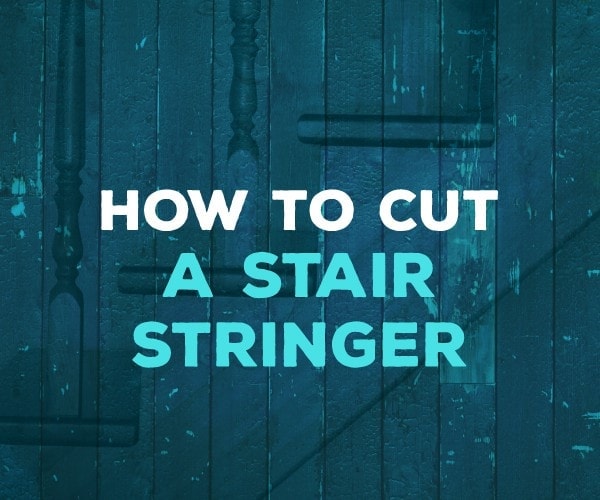There’s a reason that the professionals charge so much to build stairs – it’s a difficult and time-consuming project.
Although it can certainly be done willy-nilly, it’s essential to put proper preparation, planning, and double-checking into it if you want the finished product to look nice and last for a long time.
Sure, every part of the project is important, but perhaps the most important single aspect is laying out an accurate stair stringer.
Measuring and cutting an accurate stair stringer will make every additional step of the project that much easier and result in a top-quality finished product.
Here’s how to cut a stair stringer for your stair layout.
What You’ll Need
Despite the seeming complexity of this project, it only requires a few simple tools.
Here’s what you’ll need:
- Tape Measure
- Carpenter’s Pencil
- Carpenter’s Square
- Circular Saw
- Handsaw
- Sawhorses
Understand a Basic Stair Layout
Before you jump into this project, it’s essential to understand the basic layout and anatomy of a set of stairs.
Here are the main components:
- Stringer – The housing on the sides of the stairs. Each of the two sloped boards holds the treads and risers and supports the overall weight of the structure.
- Treads – The part of the stairs that you walk on.
- Risers – A board installed directly under each tread to add strength, improve the looks, and increase the lifespan of the staircase.
This knowledge will better enable you to see how a stair set comes together in the course of the project.
Step I: Develop a Plan
Cutting a stair stringer and building a staircase is much easier when you create a detailed plain before making the first cut.
According to Popular Mechanics, this starts with calculating the rise and run. Basically, you need to calculate the height of each riser, the width of each tread, and how many of each you will need.
Remember to keep all local building codes in mind during this step.
Step II: Measure and Mark
Measuring and marking the stringers (of which there are two) is commonly referred to as “laying out a stringer” in the business.
It consists of using a tape measure, carpenter’s square, and carpenter’s pencil to create a layout for all of your cuts on each of the two stringer boards.
The layout for the stringers will follow the plan you decided upon above. It will zig-and-zag down the board according to the location of the risers and the treads.
This step is actually easier than it sounds. Because you want each tread and riser to be the same height, you simply need to make two main measurements.
You can then move the carpenter’s square quickly down the length of each stringer, making the same marks for each riser and tread.
Step III: Make the Cuts
Position one stringer flat on the saw horses.
Use your circular saw to slowly and gently cut along the cut line you just made.
Remember that because it zig-zags, there will be strong 90-degree angles around which you must cut.
I recommend cutting short of the intersections between two lines. Get as close as you can without cutting too much.
After you are done making all of the major cuts with your circular saw, use a handsaw to finish each cut. A handsaw gives you a greater degree of accuracy when cutting out your stair stringers.
Instead of cutting out the second stringer with the same method, most experts recommend using the first stringer you cut as a template.
Set it on top of the second stringer and trace the outline onto it. You now have a perfect cut template that exactly matches the first stringer.
Finish Building Your Stairs
Now that you have the two stringers cut out, the rest of your staircase installation will sail smoothly.
Install the two stringers the proper distance apart before moving onto cutting out each individual riser and tread.
Attach the treads and risers as you go and your staircase project will be finished and completed in no time.
Final Thoughts
Learning how to cut a stair stringer is much easier than it sounds at first.
I’m confident that our guide will teach you what you need to know to cut out two quality stringers for your project.
These stringers will then serve as an outline for the risers and treads as well as the rest of the staircase as a whole.
Remember to take your time understanding basic stair anatomy and creating a thorough plan before diving into your stringer cuts.
And when you’re done with this project, check out some of my other top DIY projects for your home.

